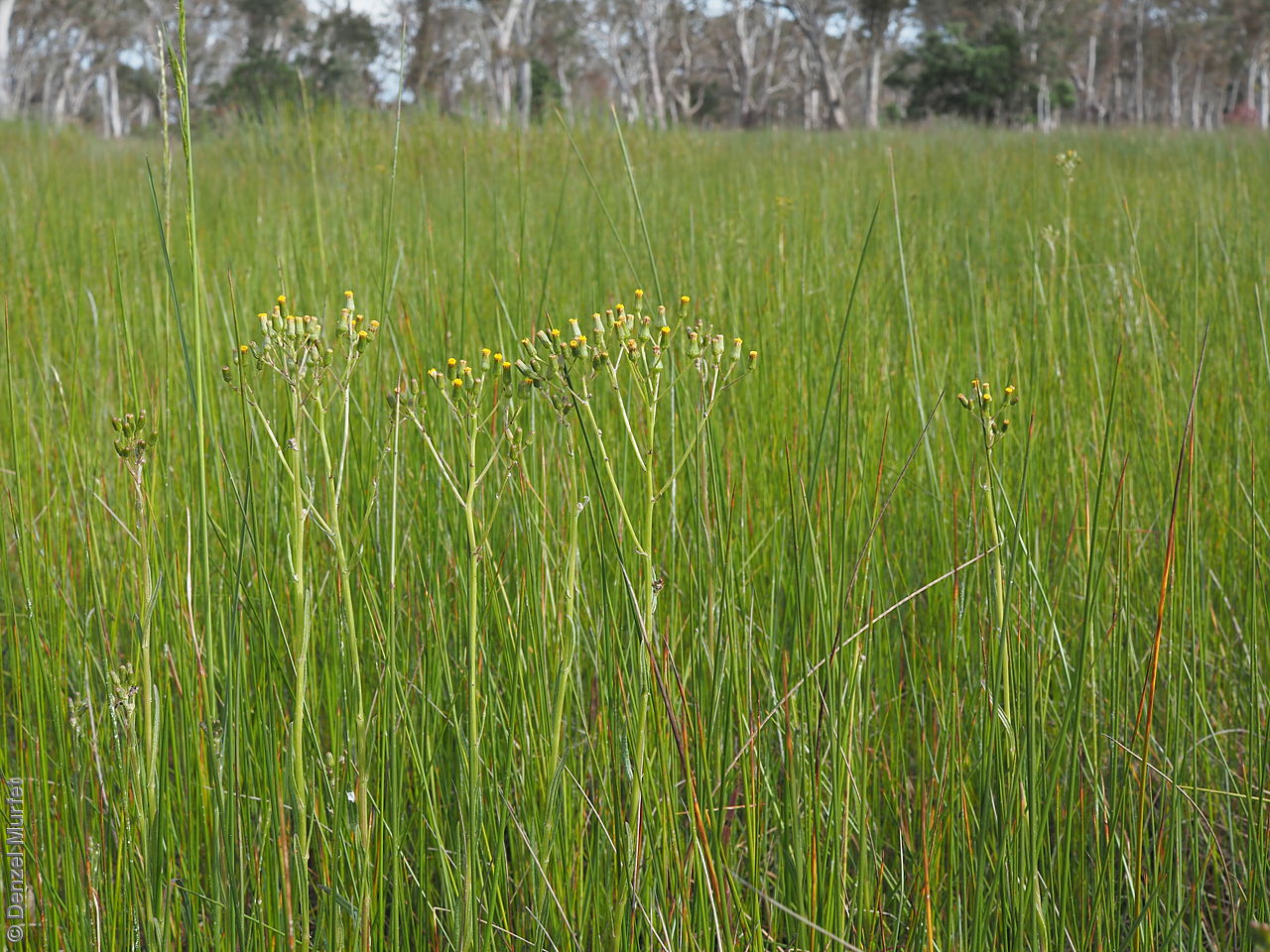
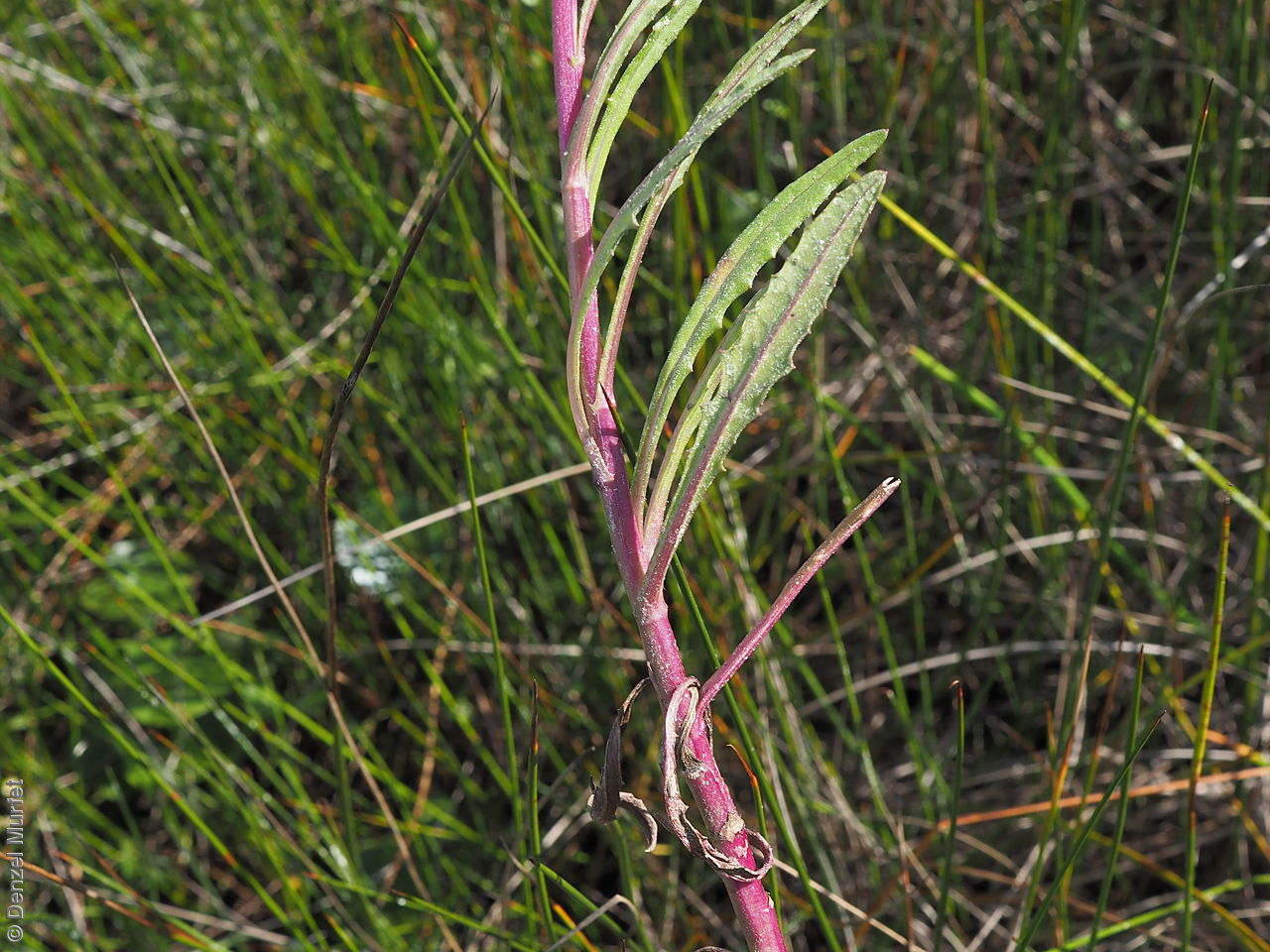
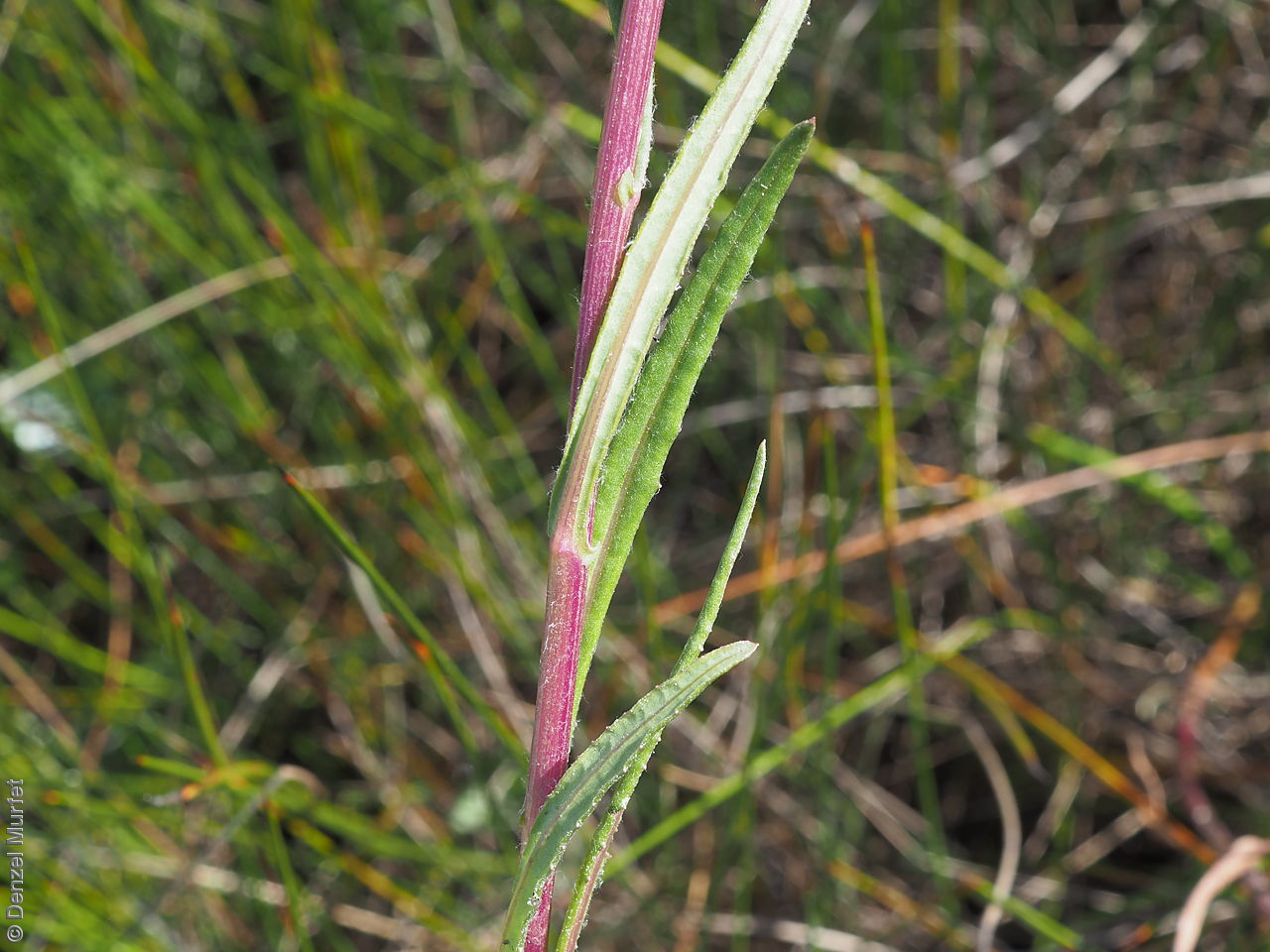
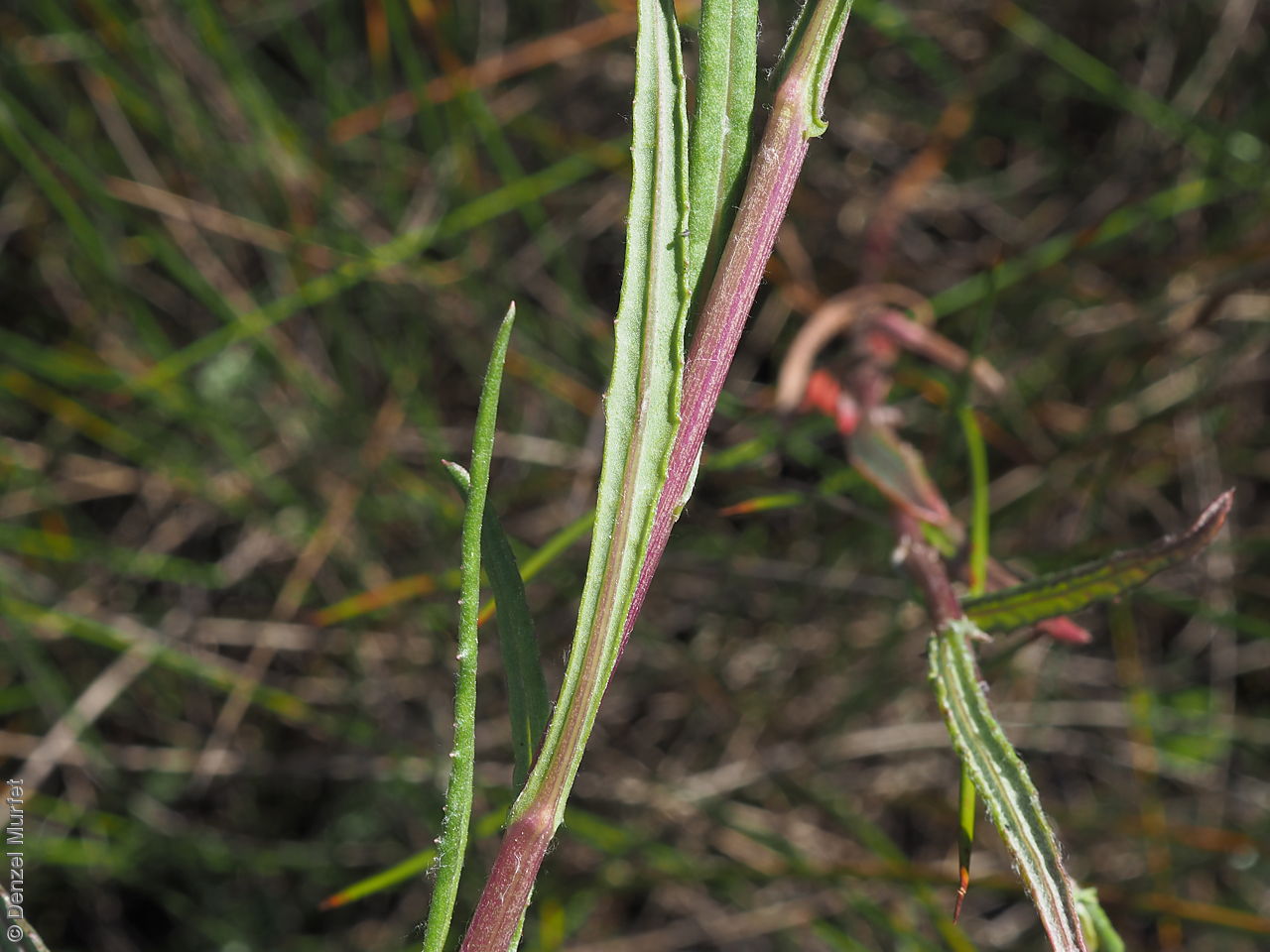
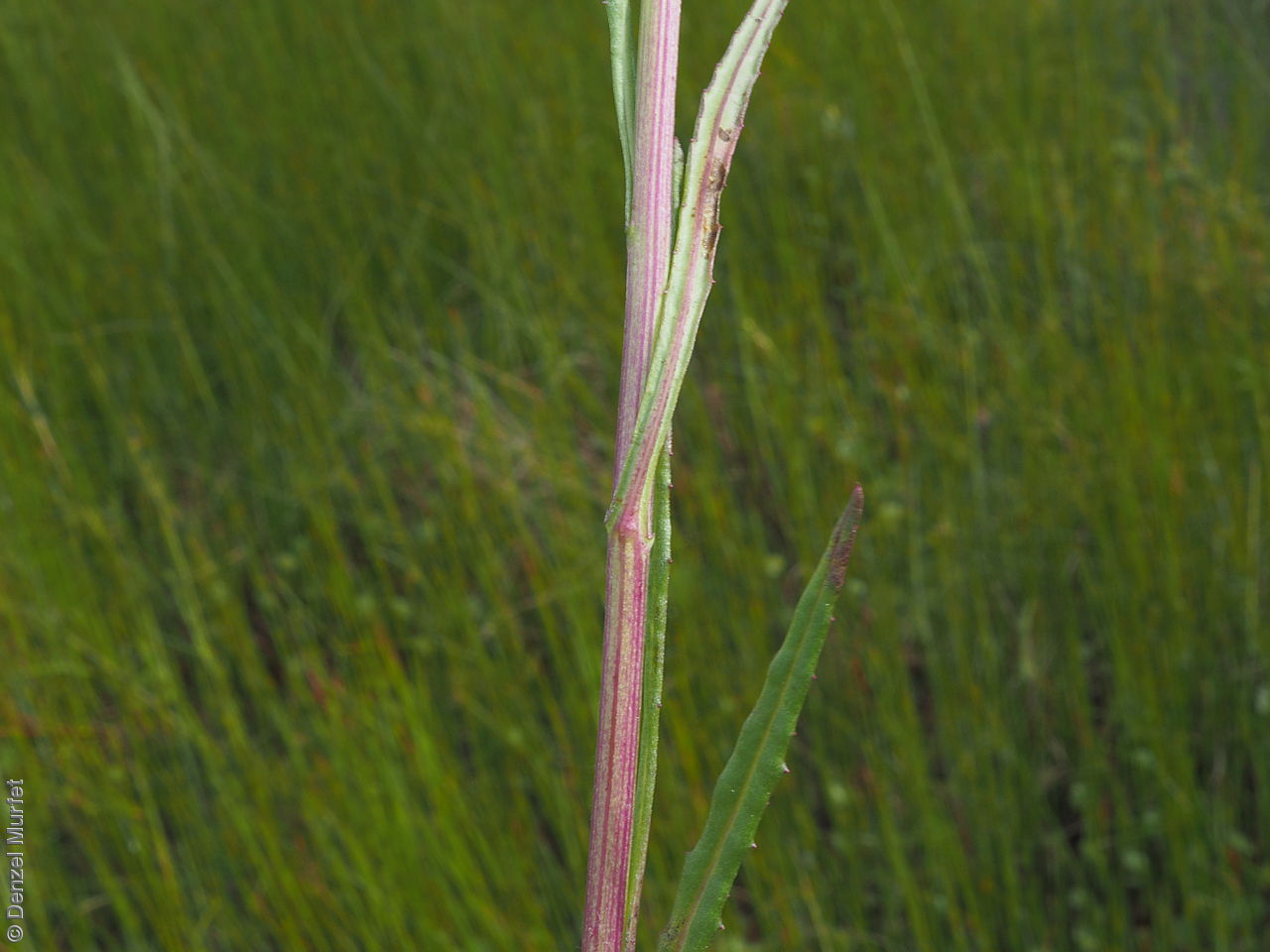
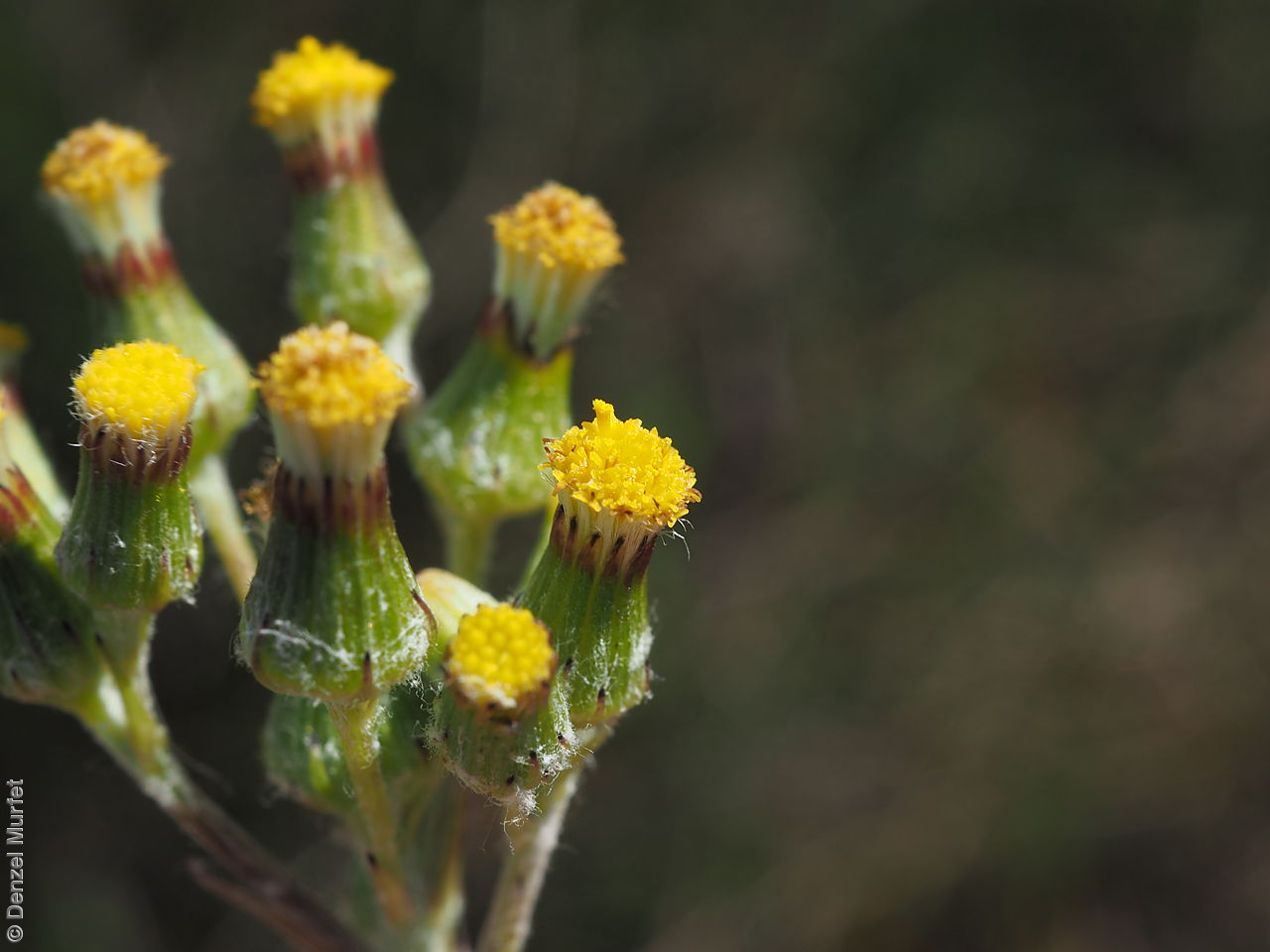
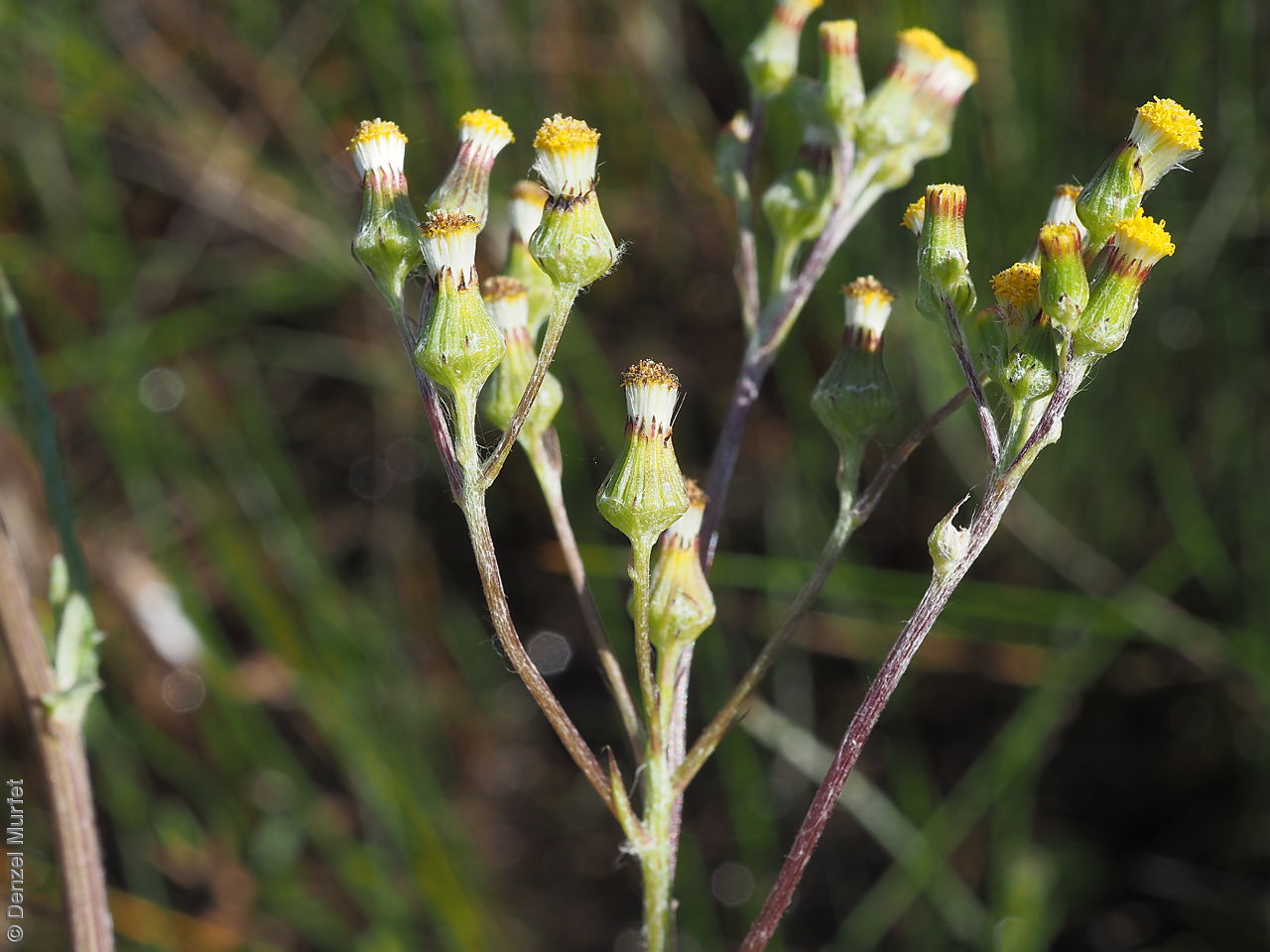
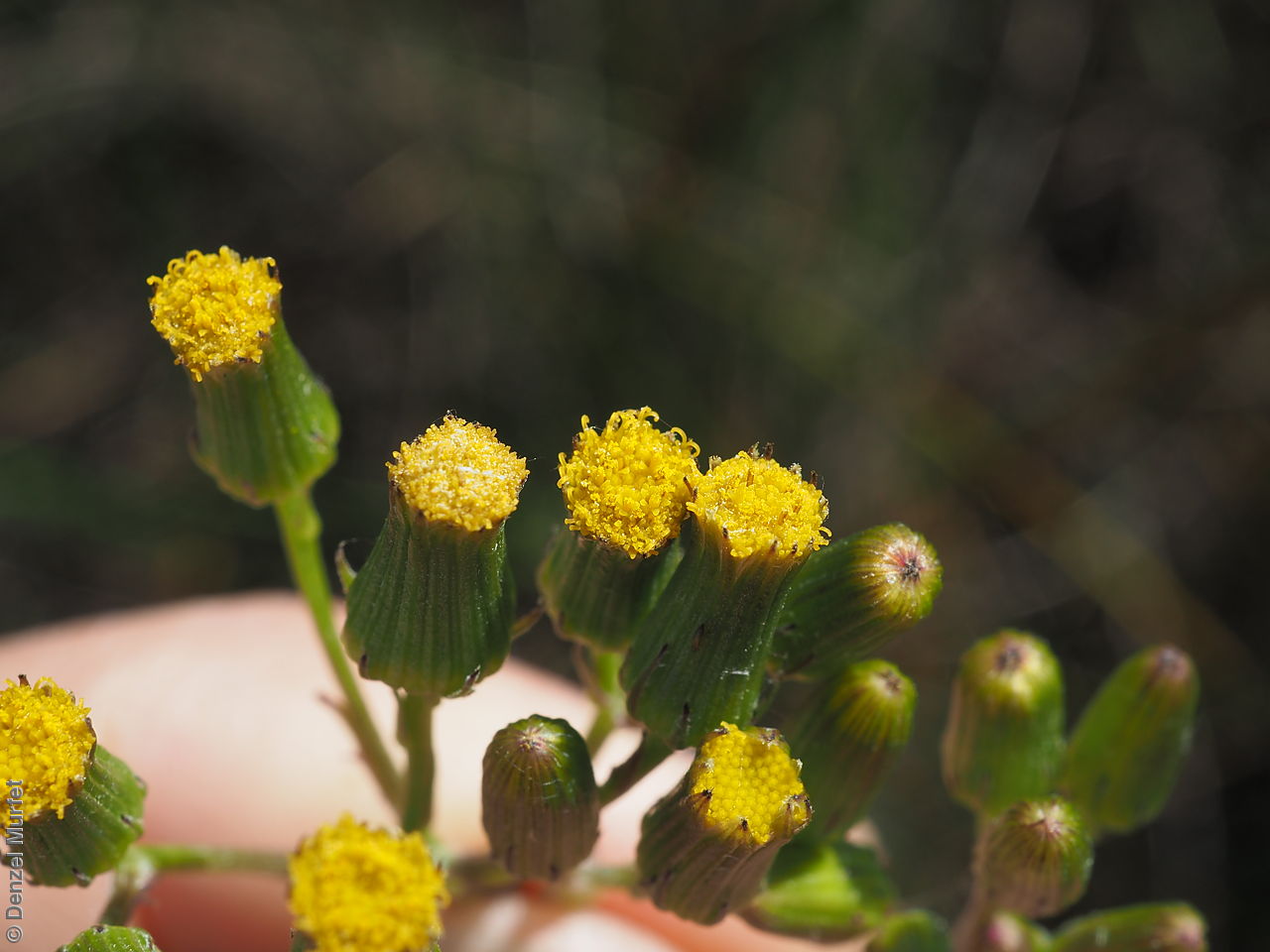
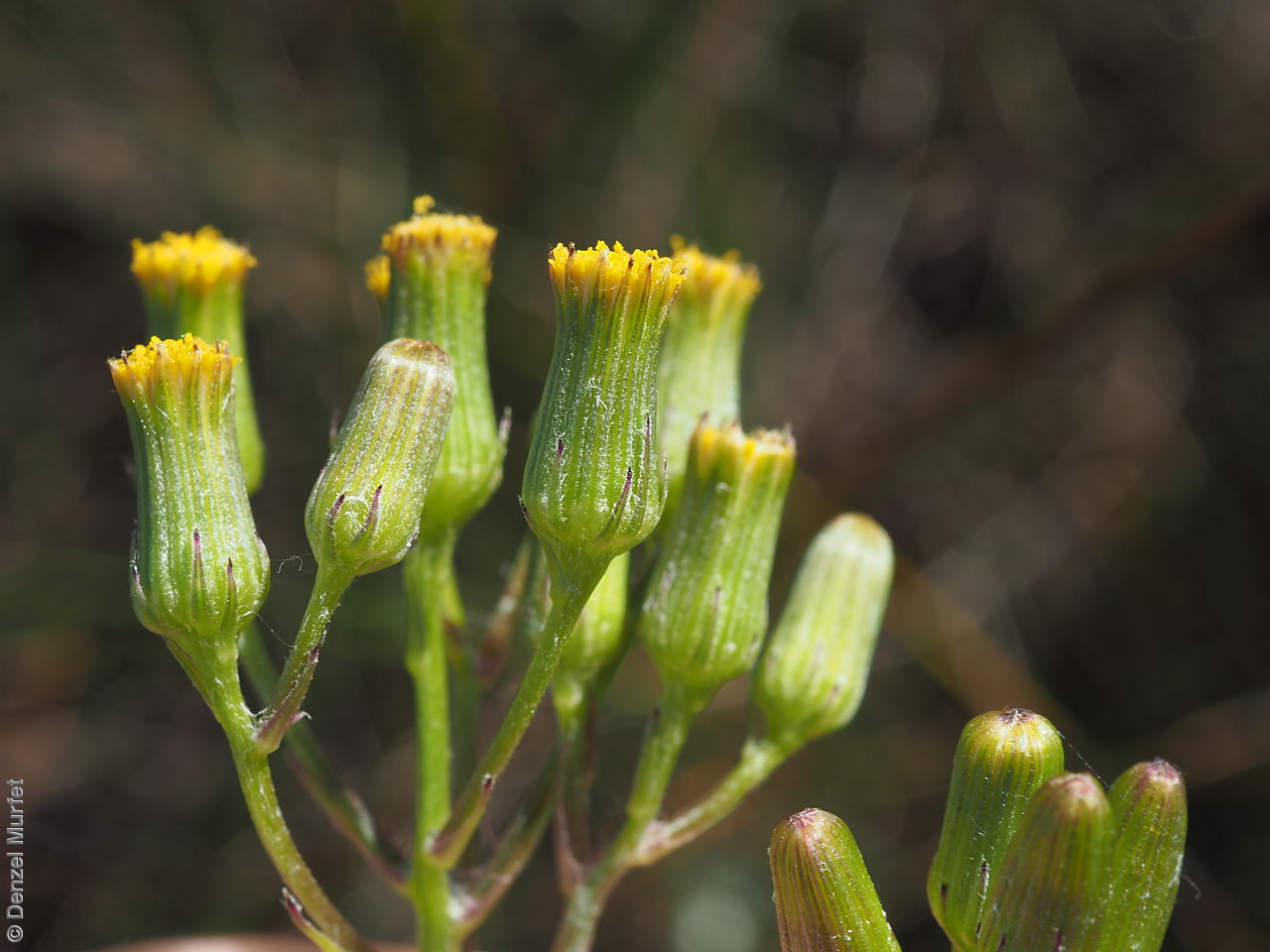
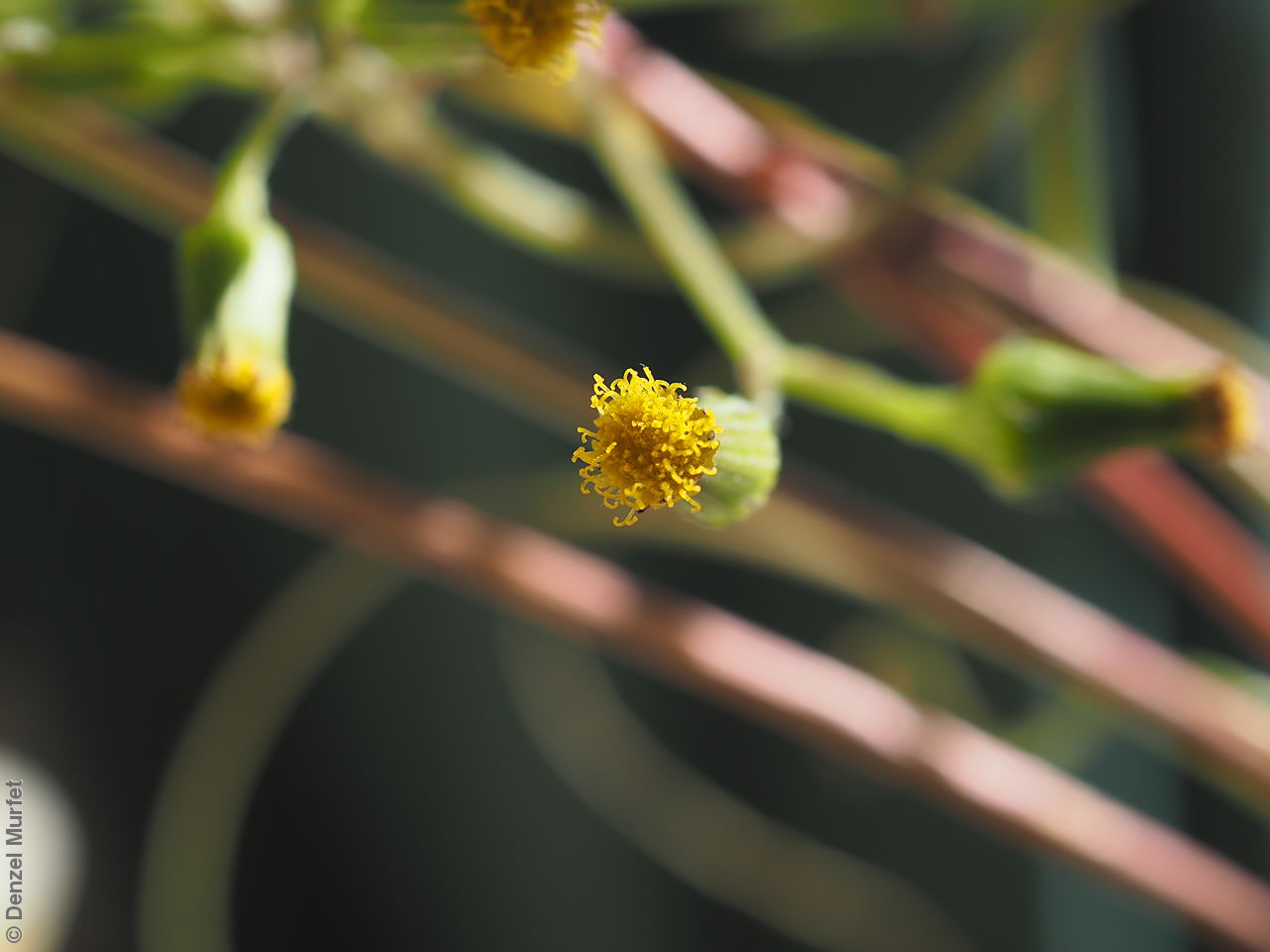
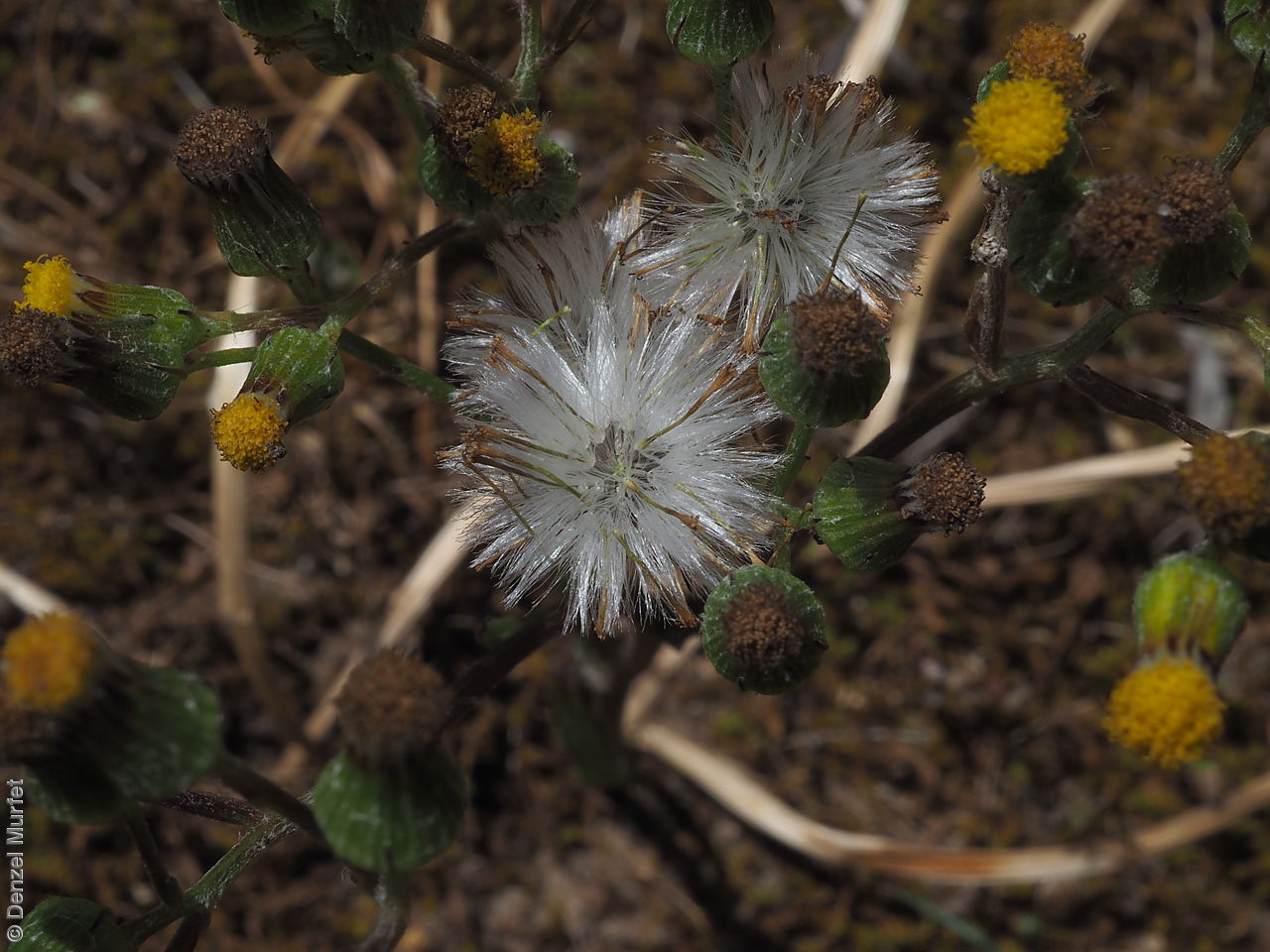
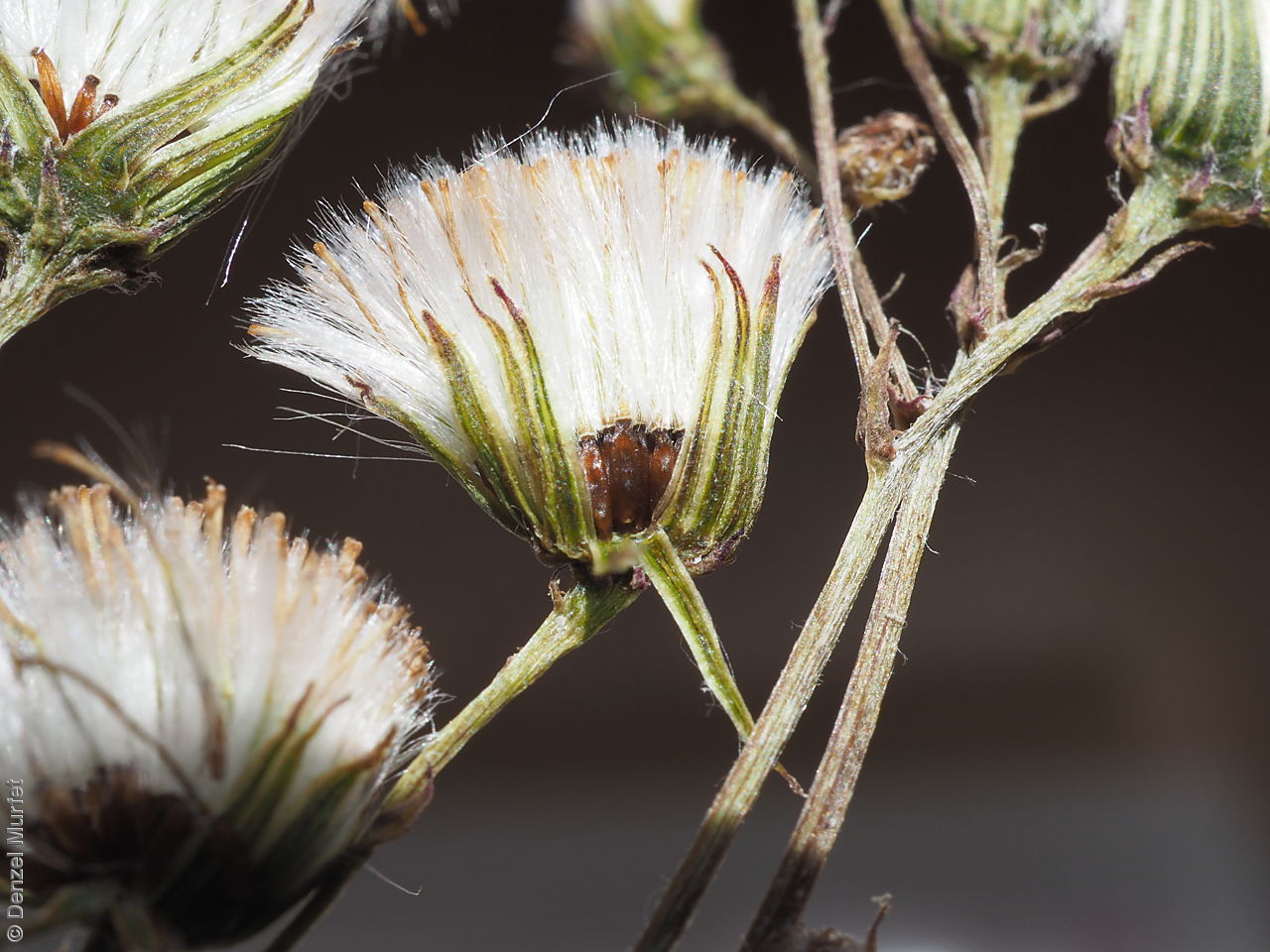
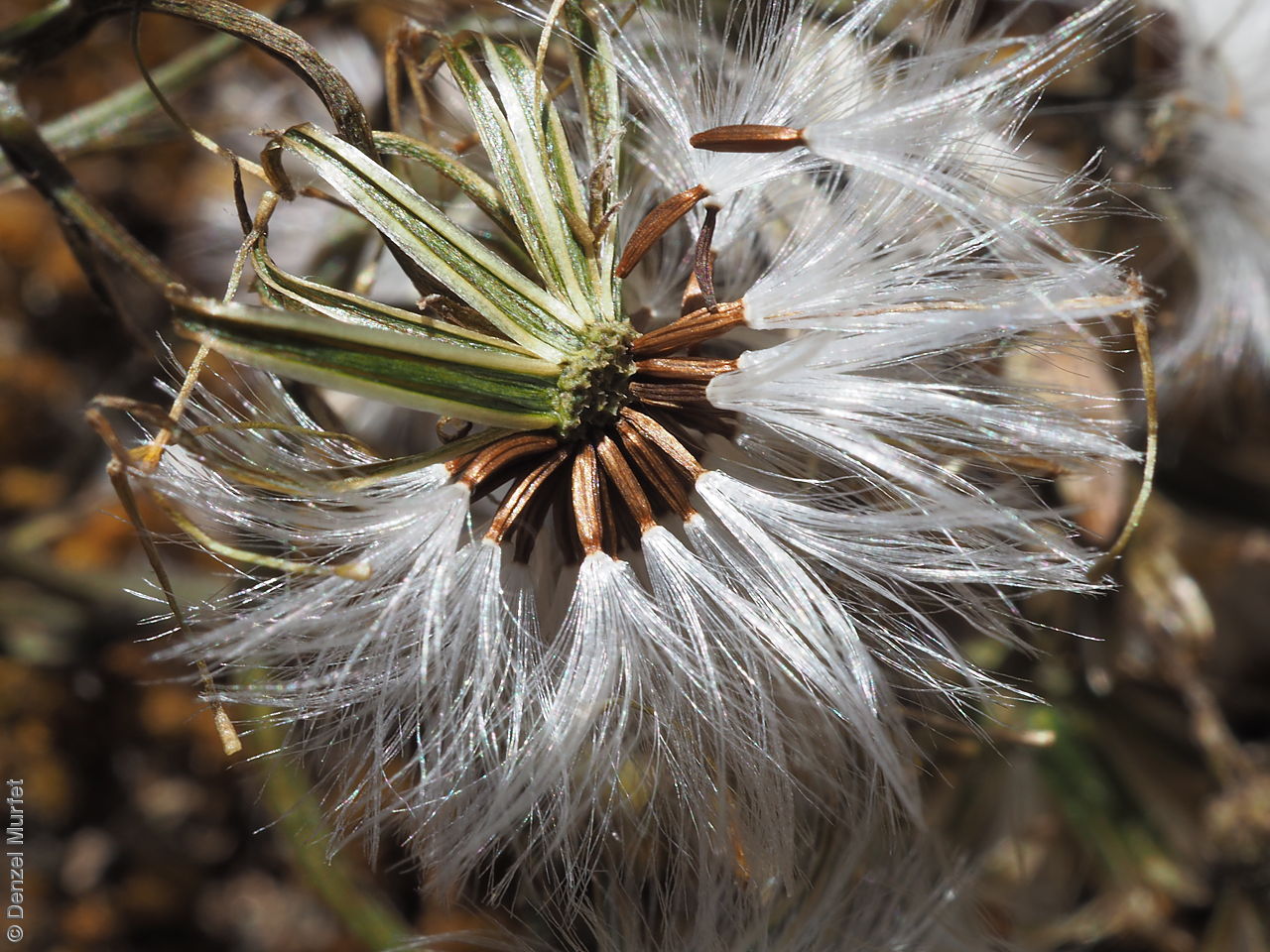
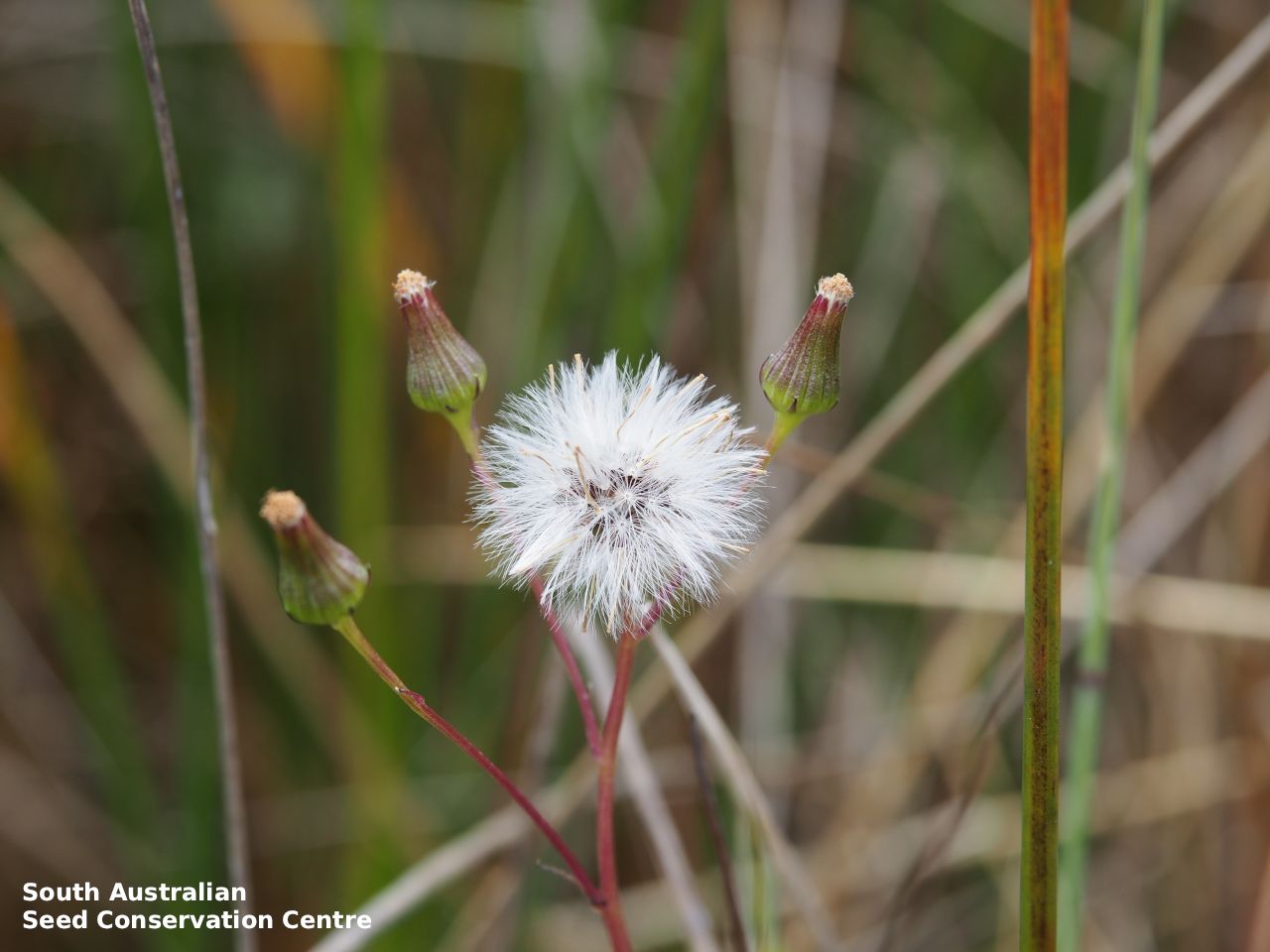
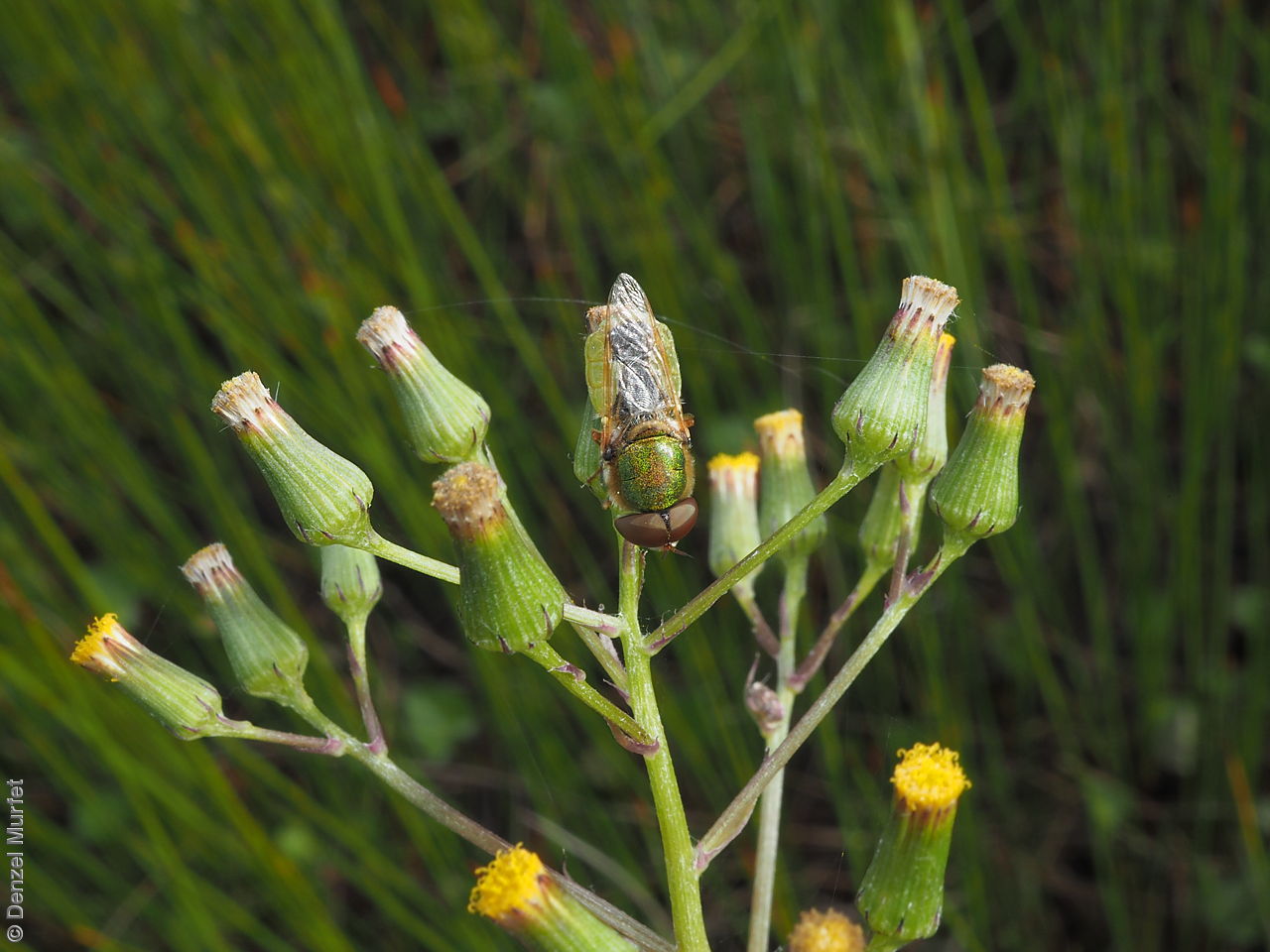
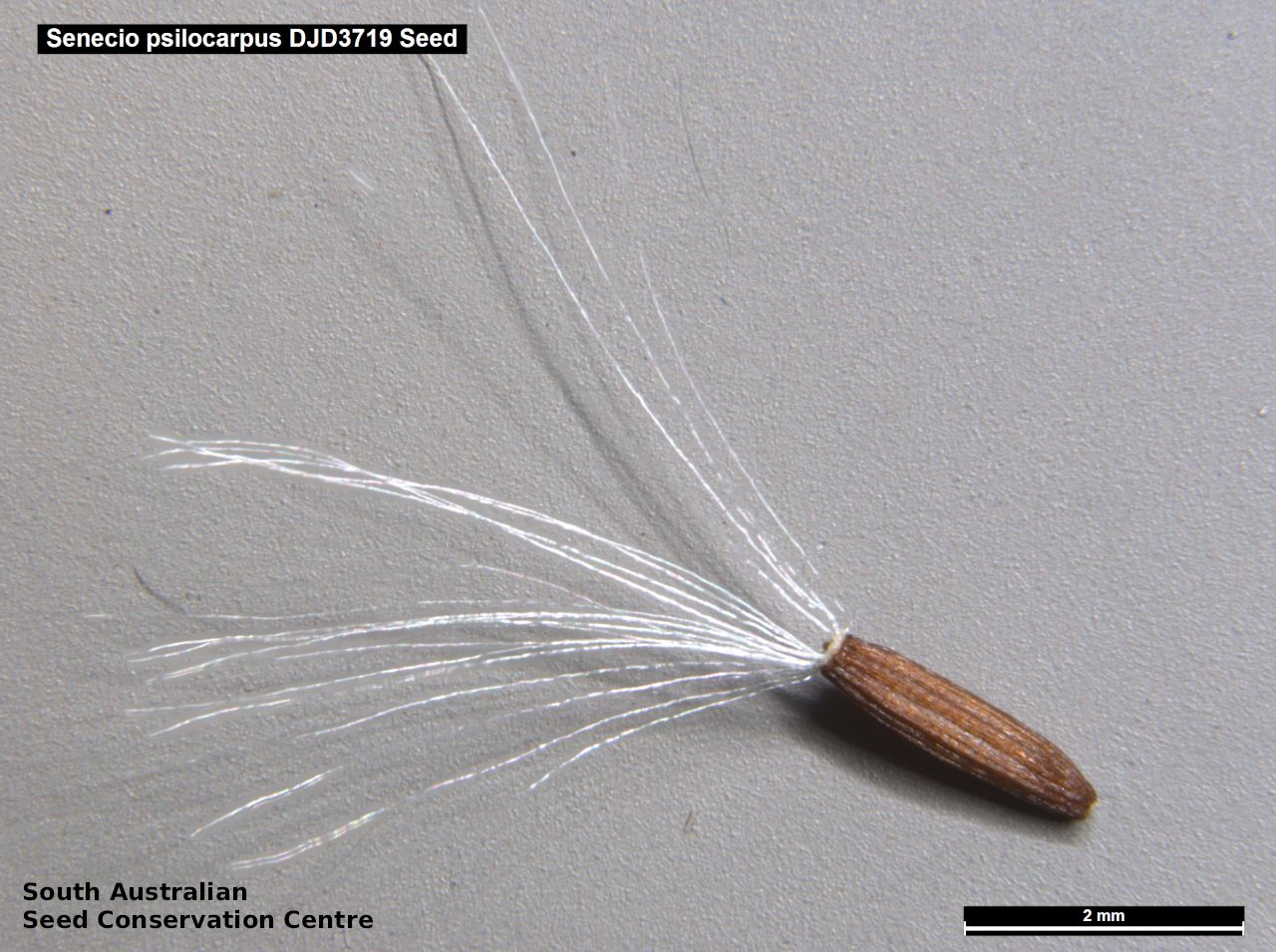
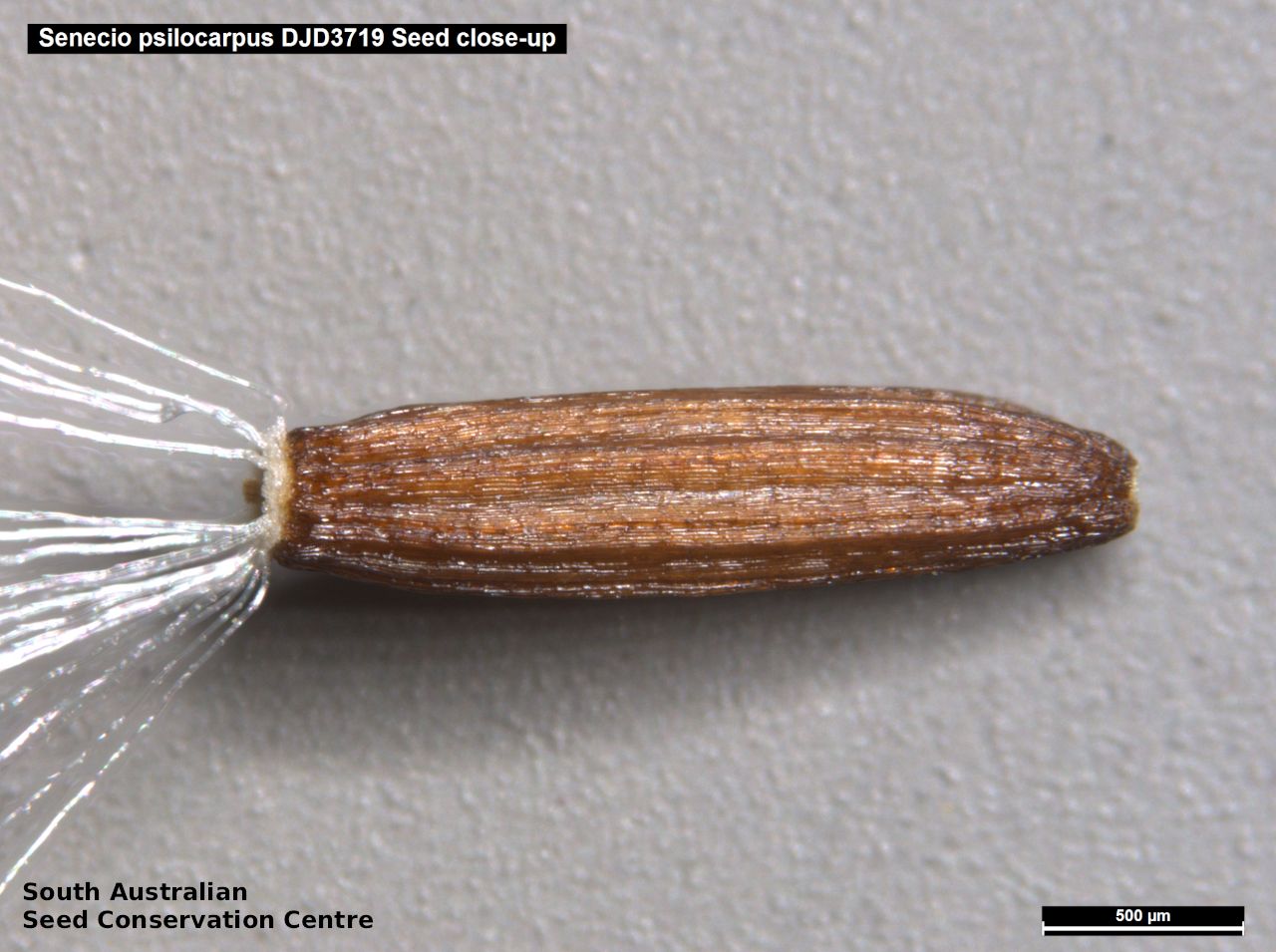
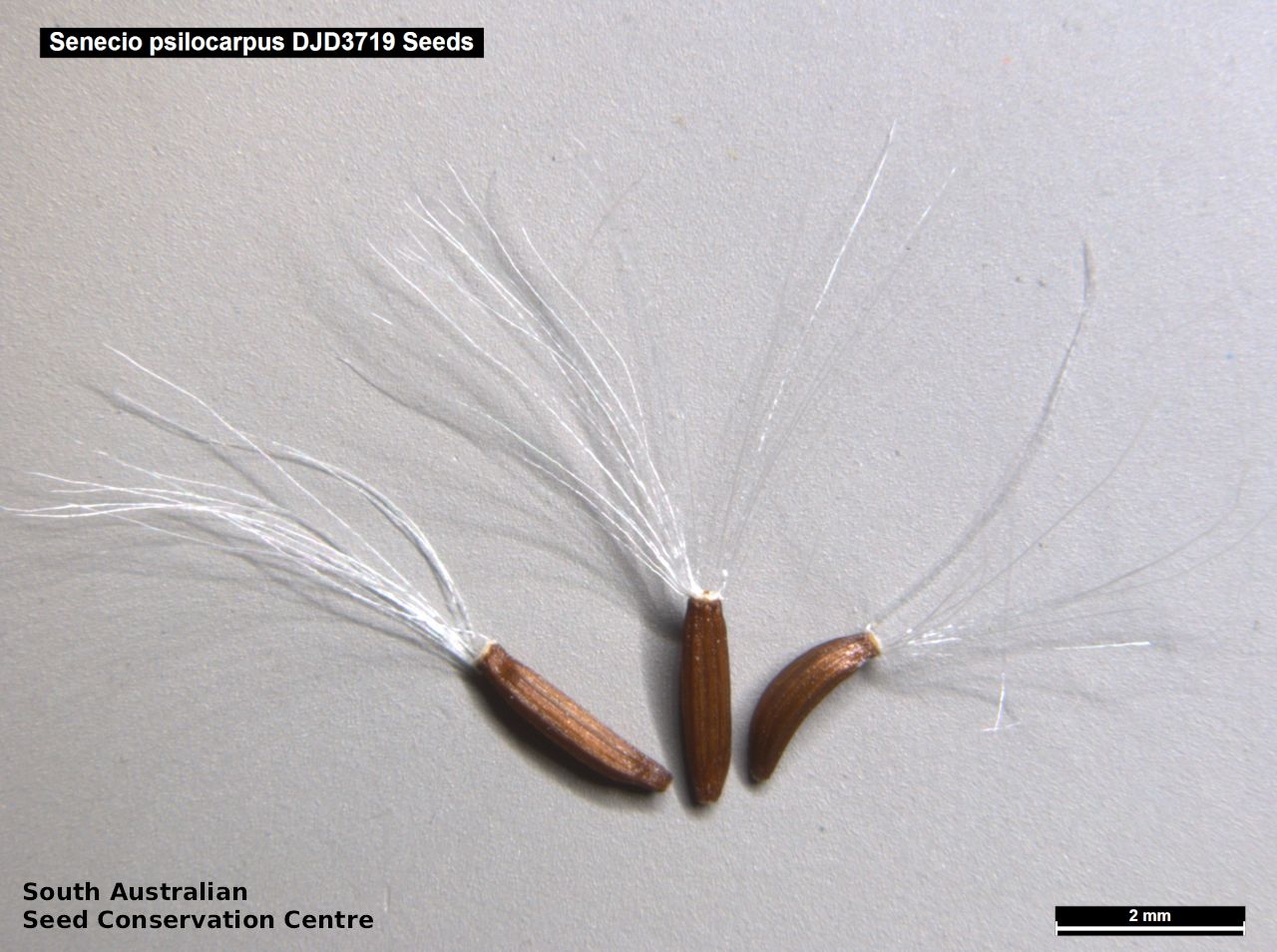


Botanical art
Etymology
Senecio from the Latin 'senex' meaning an old man; referring to the white pappus attached to the seed. Psilocarpus from the Greek 'psilos' meaning bare or naked and 'carpos' meaning fruit, referring to the species glabrous achenes.
Distribution and status
Found in the lower South-east in South Australia, growing in swamps. Also found in Victoria and Tasmania. Native. Rare in South Australia. Rare in the other states.
Herbarium region: South Eastern
NRM region: South East
AVH map: SA distribution map (external link)
Plant description
Erect glabrescent herb to 80 cm high, mostly unbranched below inflorescence and arising annually from a perennial rootstock. Upper leaves oblanceolate to lanceolate, to 12 cm long and 13 mm wide, remotely dentate or denticulate, glabrous, or occasionally sparsely hispid along margins. Inflorescence with 2–34 capitula with yellow ray-less daisy flowers. Flowering between October and February. This species is similar to Senecio squarrosus and have a similar distribution but can be distinguished by have a sparser covering of hairs, shorter capitula and glabrous achenes. Fruits are large daisy-head with exposed pappus. Seeds are brown oblong seed to 2.5 mm long and 0.5 mm wide, glabrous with a few striation and white pappus. Seed embryo type is spatulate fully developed.
Seed collection and propagation
Collect seeds between November and March. Collect heads that are large and fluffy. Either pick off the whole heads or use your finger and pull off the seeds from the head. Mature seeds will come off easily. Place the heads in a tray for a week to dry. No cleaning is required if only pure seeds are collected. If heads are collected, then rub the heads gently with your hands to dislodge the seeds. Viable seeds will be fat and hard. Store the seeds with a desiccant such as dried silica beads or dry rice, in an air tight container in a cool and dry place. From four collections, the seed viabilities were average to high, ranging from 70% to 100%.
| Location | No. of seeds (weight grams) | Number of plants | Date collected | Collection number Collection location | Date stored | % Viability | Storage temperature |
|---|---|---|---|---|---|---|---|
| BGA MSB | 21,400 (1.45 g) 13,000 (0.88 g) | 1-Dec-2005 | DJD267 South Eastern | 14-Sep-2006 | 70% | +5°C, -18°C | |
| BGA | 11,700 (2.31 g) | 50 | 23-Nov-2007 | RJB75936 South Eastern | 19-Sep-2008 | 100% | +5°C, -18°C |
| BGA | 7,400 (1.22 g) | 50 | 23-Nov-2007 | RJB75901 South Eastern | 19-Sep-2008 | 85% | +5°C, -18°C |
| BGA | 7,200 (1.92 g) | 50+ | 14-Dec-2017 | DJD3719 South Eastern | 30-Jun-2018 | 80% | -18°C, -80°C |
Number of plants: This is the number of plants from which the seeds were collected.
Collection location: The Herbarium of South Australia's region name.
% Viability: Percentage of filled healthy seeds determined by a cut test or x-ray.